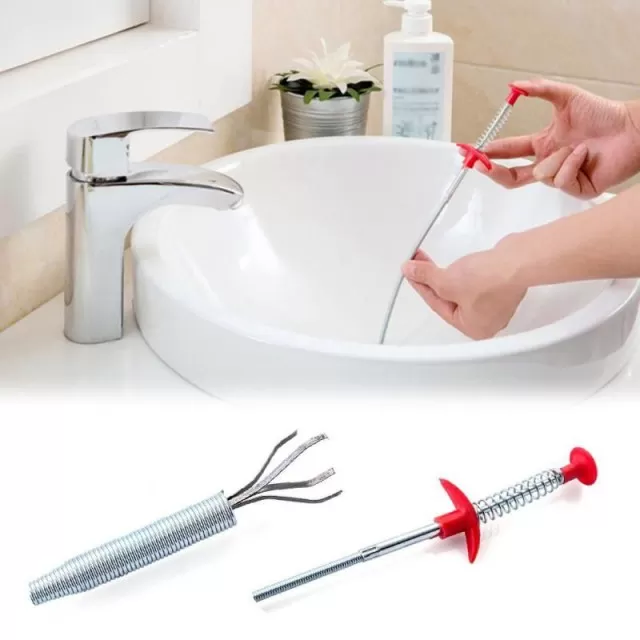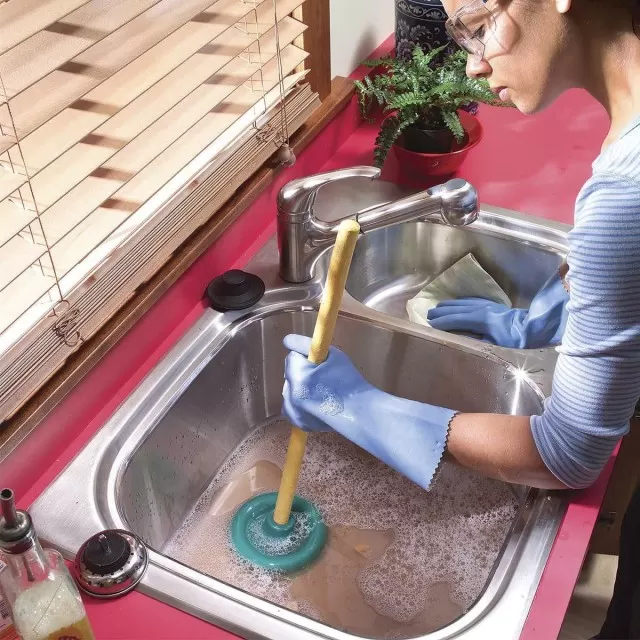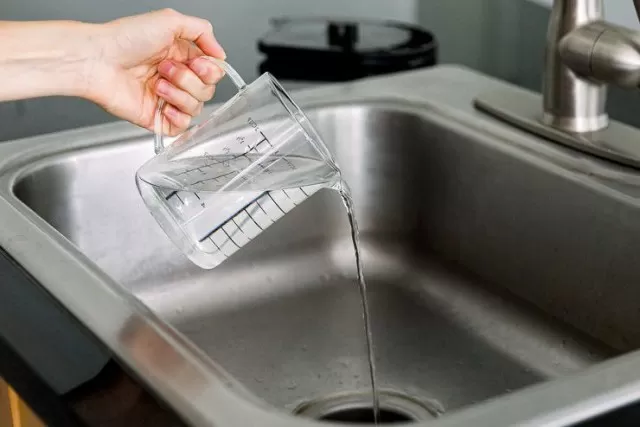Clogged Kitchen Sink? Here’s Your Solution!.Don’t fret over a clogged or slow-draining kitchen sink! With these simple tricks, you can tackle the problem yourself and bid farewell to clogs, without the need to hire a professional.No need to panic when faced with a clogged or slow-draining kitchen sink. Take matters into your own hands and say goodbye to those pesky clogs for good. With these easy-to-follow Tips and Tricks, you won’t have to call a professional for help. Save time and money by tackling the problem yourself!
Troubleshooting a Clogged Kitchen Sink with Garbage Disposal

If your kitchen sink with a built-in garbage disposal is clogged, it might be due to leftover food scraps from the previous night’s dinner that the unit failed to grind up.
In such cases, simply running the appliance again may resolve the issue. Start by turning on the tap and switching on the disposal.
If nothing happens when you flip the switch, it’s possible that the clog has overloaded the motor and tripped the disposal’s internal circuit breaker.
To reset the circuit breaker, look underneath the unit for a small red button and push it. Then, give it another try by running the disposal again.
Using Boiling Water to Clear Clogs
In some cases, you can effectively dissolve a partial grease clog by using boiling water.
Start by filling a pot or teakettle with water and bringing it to a boil. Once the water is boiling, carefully pour it directly into the drain. If the water drains easily, you have successfully cleared the clog and can proceed with the following kitchen sink maintenance tips. However, if the water doesn’t drain, wait for it to cool down before moving on to the next step.
Using a Plunger to Clear Clogs

A plunger is often an effective tool for dislodging and removing clogs from your Sink Drain.
Follow these steps to properly use a plunger:.
If you have a double sink, start by blocking the unclogged side with a stopper or a wet rag.
For a good seal, ensure there is at least three or four inches of water on the clogged side.
If needed, run the sink until the water reaches that level.
Place the plunger over the clogged kitchen sink drain, ensuring a tight seal.
Vigorously pump the plunger up and down for approximately 30 seconds.
Pause and check if the water easily swirls away, indicating that the drain is cleared.
If so, you’ve successfully removed the clog. If not, continue plunging for another 30 seconds.
If the clog persists despite your efforts, it’s time to try an alternative approach.
Inspecting and Cleaning the Trap
If the previous methods haven’t resolved the issue, or if both sides of a double sink are clogged, it’s likely that the clog is located in the trap—the U-shaped portion of your sink’s drainage pipe.
Follow these steps to check and clean the trap:.
Prepare a bucket to catch water and, if needed, have a wrench ready to loosen the fasteners securing the trap.
Position the bucket beneath the trap to catch any water that may spill out.
Use your fingers or a wrench to loosen the fasteners and remove the trap.
Examine the trap for any blockages.
You can use a coat hanger or a similar tool to push out any clogs obstructing the pipe.
Rinse the trap thoroughly, either in a different sink or using a garden hose, to ensure it is clean.
Place the trap back in its original position and tighten the fasteners securely.
Turn on the faucet and check if the water drains normally.
If the clog persists or if no blockage was found in the trap, proceed to the next step.
Using a Drain Snake

If the clog persists beyond the trap, it’s time to bring in a drain snake, also known as a sink or plumber’s auger.
This handy tool, available at most home improvement centers for a reasonable price, allows you to manually crank a thin wire “snake” into the plumbing to break through blockages. Here’s how to use it:.
Purchase a drain snake from a home improvement center.
They are typically priced under $25.
Insert the end of the drain snake into the clogged drain.
Begin cranking the handle of the drain snake, slowly feeding the wire further into the plumbing.
Continue cranking and pushing the snake until you feel resistance or hit the blockage.
Once you reach the blockage, rotate the snake and push it through to break up or remove the clog.
Carefully retract the drain snake, ensuring it doesn’t get stuck or cause any damage.
Run water down the drain to check if the clog has been successfully cleared.
If the drain is still clogged, you may need to repeat the process or consider seeking professional assistance.
Remember to follow the instructions provided with the drain snake and exercise caution while using it to avoid any damage or injury.
*The information is for reference only.